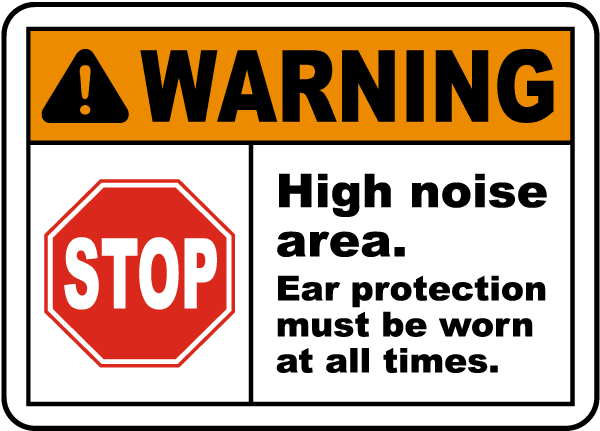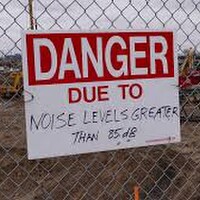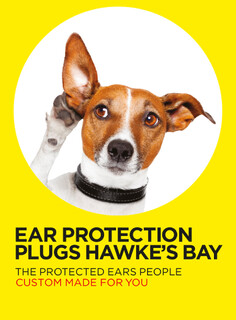Hearing Protection and Workplace Noise
As an employer it is extremely important to ensure the hearing of your workers is protected.
Hearing protection equipment
Hearing protection is equipment that protects your ears from exposure to loud noise and comes in two forms, ear muffs and earplugs.
Ear muffs are a short-term fix and ineffective, as often they are old and not maintained or safety glasses mean they don’t cover the ears properly. Off-the-shelf non-custom made earplugs do not fit properly and can be worse than useless so custom-made earplugs, although more expensive, are by far the best solution. As is often the case in life, you tend to get what you pay for and DAMAGE TO YOUR EARS IS PERMANENT!
Your responsibilities around hearing protection
- Provide your workers with hearing protection appropriate for the levels of noise in your work. Make sure that it provides enough protection, and is suitable for each worker's environment or location. Talk to a competent person to find out what hearing protection is right for your work. A competent person is someone who has the knowledge, skills and experience in appropriate techniques, procedures and interpreting results (e.g. an occupational hygienist). A competent person would normally be a member of the New Zealand Occupational Hygiene Society with the necessary relevant experience.
- Make sure that your workers are correctly wearing and using the hearing protection when needed.
- Keep hearing protection clean and well maintained. It must be maintained, repaired or replaced so it continues to minimise the risk of hearing loss. Replace worn or damaged hearing protection promptly. Your workers must tell you if their hearing protection needs replacing.
- Store the hearing protection correctly so it doesn't get damaged.
- Make sure the hearing protection is compatible with any other personal protective equipment your workers may be required to wear. For example, wearing ear muffs over a beanie or hat will break the seal of the muffs, and the protection will be ineffective.
- Make sure the hearing protection is a good fit for your workers. Workers need to feel comfortable when wearing the hearing protection you provide. Involve your workers when choosing different types of hearing protection. Think about how long your workers will be wearing the protection for.
- Not charge your workers for the hearing protection. Workers can choose to provide their own hearing protection, but you need to check that it offers the right protection for the noise levels in your work.
- Educate your workers about noise checking your workers' understanding and prior knowledge about Noise Induced Hearing Loss (NIHL) and explain the importance of hearing protection. In addition, you need to explain when and where to use the hearing protection, describe how to clean, store and maintain the hearing protection, demonstrate how it works and involve your workers in this process and provide volunteers and any visitors to your work site with training on how to use hearing protection.
Which hearing protection is suitable for your work?
Hearing protection comes in five different classes. The class of hearing protection to use will depend on the noise level in your work. The higher the noise level, the higher the class of the hearing protection. It's important that your workers wear the correct class of hearing protection, because it is specially designed to protect workers from specific levels of noise over specific timeframes. Here are the hearing protection classes:
| Class of hearing protection | Decibel level |
| Class 1 | Less than 90 |
| Class 2 | 90 to less than 95 |
| Class 3 | 95 to less than 100 |
| Class 4 | 100 to less than 105 |
| Class 5 | 105 to less than 110 |
A competent person (see above) can measure your noise levels in your workplace and advise which hearing protection is appropriate to your workers.
What else do you need to do to protect your workers?
- Manage the source of noise. You can do this by:
1. using quiet equipment
2. putting the noisy machinery in a room away from workers or outside
3. reducing vibration
4. rotating workers between noisy and quiet jobs
5. scheduling noisy tasks for when the fewest number of workers are on-site.
- Talk to a competent person to check if a noise assessment is needed for your work.
- Use signs to identify areas where the noise risk exists and where hearing protection must be worn. These areas are where the noise levels exceed 85 db(A) (decibels) over a period of 8 hours, or peak noise levels of 140 db(A). Signs should be easy to read. Warn your workers when noisy work will be happening, so they can move away or wear hearing protection.
- If signs can't be displayed, make sure tools and equipment have warning signs that show hearing protection must be worn when using it.

Get in touch today
We can come to your workplace at a time when it suits you (out of hours if need be to catch shift-workers) and take care of all your custom-made ear protection plug needs, all you need to do is make your employees available.
Don’t risk your employees hearing or pay more than you need to in ACC premiums. Call or text Nick on 021 225 6425, or email Nick on nick@earprotectionplugshb.co.nz and ask us for a quote.
Ear Protection Plugs Hawke's Bay is a division of Ear Suction Hawke's Bay Limited.

